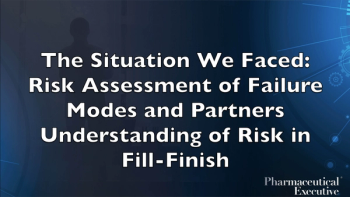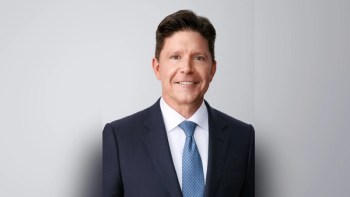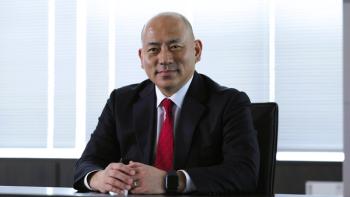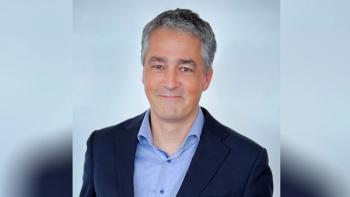
Making the Leap from Big Pharma to Startups: Mark Altmeyer
Mark Altmeyer, CEO of Arvelle, offers three recommendations for big pharma executives who are considering making the leap to startups.
In this installment of the Harvard Business School Healthcare Alumni Association (HBSHAA) Q&A series, Michael Wong speaks to Mark Altmeyer, CEO of Arvelle, who offers three recommendations for big biopharma executives who are considering making the leap to startups.
Michael Wong: During our last Q&A five years ago, you had mentioned how being courageous means taking ownership to acquire certain skill sets that may not even be top of mind of your current employer and saying “yes” to opportunities that may be uncomfortable and risky. After successfully moving from a CEO role at Otsuka leading 1,700 teammates to Axovant (~80 at peak),1 what was the journey like moving to Arvelle?
Mark Altmeyer: My journey to Arvelle was an entirely new experience for me since I was one of the founders of this startup which was created as a completely different firm from Axovant. While many Fortune 500 executives, myself included, often believe that we can make the jump to startups, it was an eye opener to roll-up my sleeves and work on everything from deciding on our launch strategy to selecting appetizers for the company reception. There was no one to delegate to as one often can in large Fortune 500s. Also, at Otsuka and BMS, I was not actively involved in fundraising or working with investors — clearly an area I had to get comfortable with and learn about their mindset. The importance of “soft introductions” to investors as well as the criticalness of a business case that ensures alignment among the launch plan, forecasts and returns to investors were just some of the learnings that I had to accomplish during the startup of this venture. Finally, it was crucial to identify people who wanted to embrace the journey I wanted to take and be agile enough to quickly pivot via the faster decision-making culture that startups often possess.
Michael Wong: To your point around faster decision-making with smaller firms, the opposite lens would be that when you’re working for large firms like Otsuka and ever larger ones like BMS where you started out your career; there are more people, be they FTEs or consultants, to help provide extra cycles to get work done. How did you manage this new startup operating model where you no longer had as much bandwidth at your fingertips?
Mark Altmeyer: Well, faster did not mean that we didn’t rigorously analyze options. These steps were still critical. What accelerated our approach was having a team that embraced this engagement model and came to the table with a deep understanding of the pros and cons of various decisions. This process then enabled us to just work through the issues and make decisions in “real time.” Moreover, we all knew what was critical for driving value for the organization and we did not get distracted by issues that weren’t key value drivers. These norms made us more efficient and freed up capacity of the team. Finally, I’d point out that to recruit such a high-performing team, our talent management strategy was to hire seasoned individuals and we paid them very competitively, not to simply attract them, but also retain them overtime. As for consultants, we were clear on when and how to engage with them. In many cases, particularly with the nuanced differences across Europe, we needed to use consultants and we considered them as “part of the team” rather than just support for the functional leads. We also selected consultants in cases where we knew we needed a short term competency and understood that long term, we didn’t require that skill set.
Michael Wong: What are the top three recommendations that you have for today’s big bio-pharma executives who are considering making the leap to startups?
Mark Altmeyer: First, in the biotech field you have to follow the data. When selecting opportunities, it means giving priority to those compounds which have the apparent best data package. Second, get ready to roll up your sleeves and do things you might not have done in the last 20 years, all the while making critical decisions on the path for your company. Finally, be extremely selective on individuals who have the potential to successfully make this leap into the world of startups; and who don’t need the support of a large organization to be effective…as small companies expose strengths and weaknesses of individuals very quickly! On the positive front, when you are able to attract and retain such people, the team creates value for the company and themselves as Arvelle did with its recent acquisition by Angelini Pharma.2
Mark Altmeyer is a Founder, Board Member, and the Chief Executive Officer of Arvelle. He was previously President and Chief Commercial Officer at Axovant. Prior to these roles, Mark was Chief Executive Officer and President of Otsuka America Pharmaceutical, Inc., where he helped grow the company’s revenue from $2.6 billion to over $5 billion. Mark received an M.B.A. from the Harvard Business School.
Michael Wong is an Emeritus Board Member of the Harvard Business School Healthcare Alumni Association.
Notes
1. Vardi, Nathan, "The 29-Year-Old Behind The Giant Biotech IPO That Rose By 90% Speaks," Forbes, June 11, 2015.
2. Angelini’s acquisition of Arvelle for $1bn:
Newsletter
Lead with insight with the Pharmaceutical Executive newsletter, featuring strategic analysis, leadership trends, and market intelligence for biopharma decision-makers.





